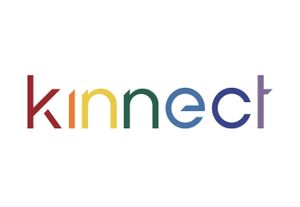
Diwali: The Festival of Lights Illuminates India's Advertising Landscape

Indians around the world are celebrating Diwali this weekend.
Diwali, also known as Deepavali, is often referred to as the "Festival of Lights" due to the tradition of lighting oil lamps or diyas, candles, and colourful lanterns during the festivities.
The festival typically lasts for five days and falls between October and November, depending on the Hindu lunar calendar. The festival holds great cultural, religious, and social importance, symbolising the victory of light over darkness and good over evil.
Diwali is considered to be the most significant festival In India, and the lure of it extends across communities and religious lines. It’s a celebration of life and an affirmation that the way ahead is paved with success and wealth.
For advertisers, the festival is a huge opportunity, and the Indian e-commerce market during this time has expanded rapidly over the past decade in anticipation of millions of customers.
In India, Diwali is not just a day of festivities but a celebration season. Sentiments of togetherness, family, and gratitude underpin the festival’s modern adherence in much the same way as most festive seasons worldwide.
Sourav Ray, chief strategy officer of Cheil India, also stresses the place of excessive celebration and gifting in the culture of the Diwali festival.
“For Indian consumers, it is the time to indulge in their most loved and awaited products and an august opportunity for brands to push their products to these ever-eager consumers,” Sourav says.
Oindrila Roy, Publicis Worldwide India managing director, says Diwali has been a key shopping season “from time immemorial."
“There was a time when most people would buy clothes only once a year – during the festive season,” Oindrila says.
“Historically, Diwali coincides with the harvest season … after the kharif crops are harvested and sold, in the agrarian economy, people had a little more money to spend buying clothes for themselves and sweets and gifts for others.”
“Consequently, marketing has also evolved with the times. Moving away from just sale announcements, it has now taken the shape of standalone festivals – a lot like Singles Day in China and Black Friday in the West.”
Marketing and advertising efforts across categories have transformed and added new traditions to Diwali celebrations over the years. Traditional sweets are being replaced with Western packaged food, including chocolates, cookies, and juices, as well as packaged savouries to add a modern twist to Diwali food gifting.
“While a few brands still concentrate on playing on festive rituals and traditional clothing, encouraging Indian consumers to buy expensive products, many others now take a ‘do-good’ brand stance, focusing on different social causes every year,” Sourav says.
“In the same spirit along with offers and discounts, marketing chatter also highlights the goodness of a brand during the season.”
For Mithun Mukherjee, FCB Kinnect ECD, brands that want to lean into their “Made In India” credentials see Diwali as a critical festival.
“E-commerce players have dedicated budgets aligned to this period,” Mithun says. “For the consumer, it isn’t just a time to connect with their family, but to make their most significant investments.
The extensive discounting during Diwali drives this practice. Brand messaging during Diwali in India tends to follow the theme of ‘new beginnings’, and auto brands generally use the emotion of a new car or bike to signal progress and achievement.
For ADK Global’s chief transformation officer, Neville Medhora, any brand with an iota of marketing spend will tend to invest heavily in advertising during Diwali.
“It’s a time when even the thriftiest household will look to buy appliances, clothes, and automobiles,” Neville says. “E-commerce sites have made it even simpler and (seemingly) cheaper to buy, EMIs come to the rescue of the cash strapped, and everybody wants to show off something new.”
“Offers and deals overwhelmingly lead Diwali Advertising,” Neville says, with brands tending to give discounts or value adding. The big e-commerce players have special days where offers drive their sales and are much looked forward to.”
Sourav also notes these online retail trends are becoming a central part of Diwali advertising in India.
“Discounts and offers drive 59% of Diwali sales,” Sourav says.
“According to the Indian Festive Report 2023, the consumer will likely land the best deal online. We are witnessing a behaviour change; the Indian consumer wants to experience the product and quality offline and buy online to get the best deals. Marketers are, therefore, diving in with a mobile-first approach to drive end sales.”
With several strong e-commerce brands, customer attention is split across multiple platforms, driving competitive Diwali prices.
According to Mithun, Diwali marketing has pivoted strongly on a sensibility of togetherness in the community in recent years versus inciting the consumer to shop.
“From a time when Diwali marketing was often limited to few ads on select TV channels and a few outdoors, the marketing now not only targets specific cohorts but nuanced consumer behaviour, which is also constantly evolving with every season,” Mithun says.
“The trends this season have mostly been bullish. Sustainability is becoming a key focus for many people who want to shop. This has to do with the consumer not just getting hyper-aware about brands, but also paying much more attention to how their consumer habits impact the planet.”
Sourav says that with increasing pollution and decadent festive eating practices, marketers across categories now leverage the season to drive health conversations, encouraging consumers to make healthier choices.
Oindrila also notes the emerging “green hue” of Diwali – from fewer firecrackers to earth-friendly gifts such as plants and fashion wear made of organic cotton, to home décor made of clay or handwoven jute, and low energy consuming fairy lights.
“Given the growing sentiment towards going green, this trend should impact advertising and marketing too.”
According to Sourav, the emerging use of AI to hyper-personalise content for end consumers, as well as a financially independent Gen Z, has been the most significant change in the market for the past few years.
At ADK, Neville’s team has noticed influencer marketing spending rising across the board this year, and their data shows up to 80% of Diwali buyers actively engage with user-generated content to shape their purchase decisions.
“Regional language campaigns have grown and gathered more relevance,” Neville continued.
“This year’s Cricket World Cup has fanned the flames of consumerism, and the continued success of the Indian team has also uplifted buyer sentiment.”
Whether consumerism continues to dominate the festivities or consumers instead demand sustainability, advertisers in India are well placed to take advantage of one of the world’s largest festivals, which continues to evolve after 2,500 years

















